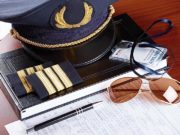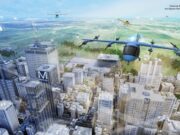The increasing use of drones in security patrols, emergency response, cargo transport and other areas will test existing airspace monitoring systems and regulations, and should be the subject of intensive research to measure the effects on society, a committee of the National Academy of Sciences says.
“Advanced aerial mobility involves the emergence of transformative and disruptive new airborne technology,” said Nicholas Lappos, chair of the Committee on Urban Air Mobility Research and Technology and also a senior fellow for advanced technology at Sikorsky. “We believe that the acceptance of these new vehicle operations will depend on important factors such as the public’s perception of their safety, noise and intrusion.”
Lappos made the remarks Wednesday as the committee released a report, “Advancing Aerial Mobility ─ A National Blueprint,” which called for collaborative research by the U.S. National Aeronautics and Space Administration (NASA), the U.S. Federal Aviation Administration (FAA), industry and academia into the effects on society of increased drone traffic.
The committee said that existing approaches to cybersecurity, which rely on threat analysis and information security “will not be adequate for future advanced aerial mobility platforms that involve safety-critical operations performed by autonomous systems, such as emergency response.” The FAA will be responsible for establishing those standards, but NASA should be involved in the research and development of the relevant software and hardware certification techniques and guidelines, the committee said.
“Researching better contingency management procedures for autonomous operations, primarily involving real-time data processing, is also essential for safety,” the panel added.
The panel also recommended that the FAA and NASA cooperate on research to determine how air traffic management data should be shared “so as to introduce advanced aerial mobility traffic into the National Airspace System. This system would use one infrastructure with multiple levels of complexity to network piloted and unpiloted vehicle types and use technology to manage, separate and prioritize air traffic.”
The report said that NASA should establish partnerships with cargo logistics providers and others to “fulfill latent needs in the autonomous cargo delivery industry.” The document said the goal should be to accomplish cargo delivery by drones within three years.
.



